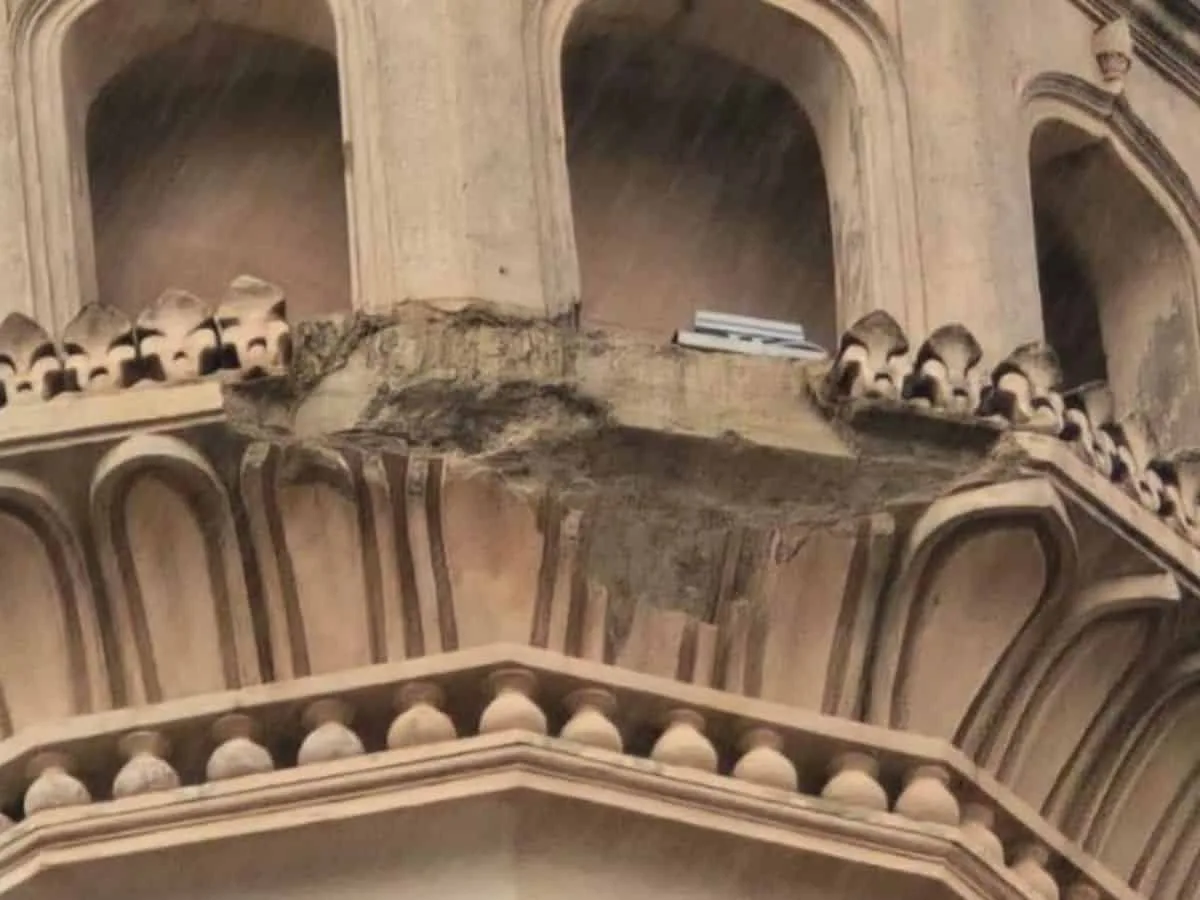Hyderabad: Pieces of mortar from the north-east minaret of the historic Charminar fell down during the heavy rains that lashed the city from Thursday afternoon. Visuals of the damage showed that a small portion from top of the monument had chipped-off while it was pouring.
A video of the incident that has been doing rounds on social media clearly showed the damage to the Charminar, that is controlled by the Archaeological Survey of India (ASI). Work on the monument is also constant as it needs to be regularly cleaned due to pollution darkening the limestone mortar.
The northeast minaret of the Charminar is also the one on which the Bhagyalaxmi temple is built upon on the outside. This is however not the first time that parts of the historic site have fallen.
SC halts tree felling, warns govt against other activity on Kancha Gachibowli land
In 2019, a chunk of the 434-year-old Charminar witnessed even more damage when a huge chunk of its lime-plaster from the south-west minaret broke and fell to the ground late. The lime-plaster that fell then had eight flower-petals that are sized about 2.5 meters/0.8 meters.
The plaster of limestone mortar on the monument was redone around 1924 by the last Nizam of Hyderabad Mir Osman Ali Khan. The monument was constructed in 1591 by Muhammad Quli Qutb Shah, the fourth king of the Qutb Shahi or Golconda dynasty (1518-1687). The Charminar was built as the foundation of Hyderabad, after its founder decided to shift out of the Golconda fort.
Apart from these damages, the Charminar has also seen other structural damages. The ASI a few years ago had decided to study a huge crack in its north-eastern side to ascertain whether it has affected its structural integrity.







